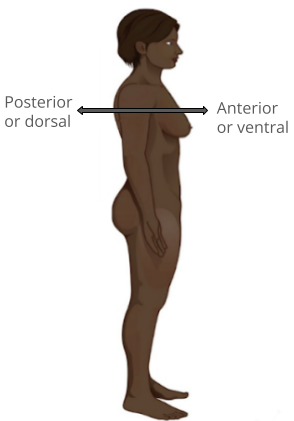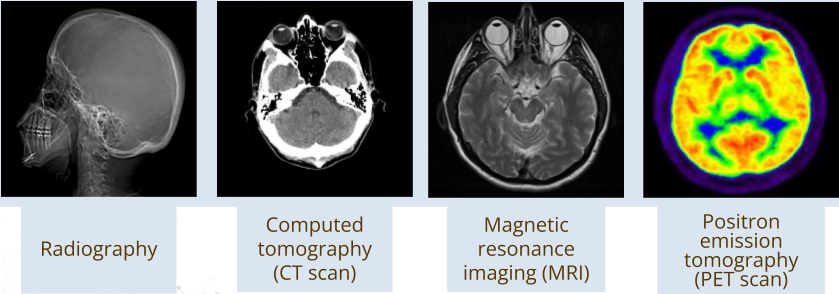Lesson 3: A & P Terminology
A&P Terminology
By the end of this lesson, students will be able to:
- Locate various organs in the body using the basic anatomical terms for:
- body position (anterior/posterior, supine/prone)
- direction (superior/inferior, lateral/medial, proximal/distal, superficial/deep)
- plane (sagittal/frontal/transverse)
- compartments (dorsal/ventral)
- body regions
- Identify the major body cavities, their membranes, and membrane layers
Introduction
Understanding anatomical terminology is essential for accurately describing the locations and relationships of structures in the human body. This module introduces key terms related to body position, directional references, planes, compartments, body cavities, membranes, and regional terminology.
Body Position Terms
- Anterior (ventral): Toward the front of the body
- Posterior (dorsal): Toward the back of the body
- Supine: Lying on the back, face upward
- Prone: Lying on the stomach, face downward

Directional Terms
- Superior: Above or toward the head
- Inferior: Below or toward the feet
- Medial: Toward the midline of the body
- Lateral: Away from the midline
- Proximal: Closer to the point of attachment to the body
- Distal: Further from the point of attachment to the body
- Superficial: Closer to the surface
- Deep: Further from the surface
Body Planes
- Sagittal plane: Divides the body into left and right sections
- Frontal (coronal) plane: Divides the body into front and back sections
- Transverse plane: Divides the body into top and bottom sections
- Oblique plane: A diagonal section through the body
Body Cavities and Membranes
- Dorsal body cavity: Contains the cranial and spinal cavities
- Ventral body cavity: Contains the thoracic and abdominopelvic cavities
- Membranes: A tissue membrane is a thin layer or sheet of cells that covers the outside of the body, the organs, internal passageways that lead to the exterior of the body, and the lining of the moveable joint cavities. There are two basic types of tissue membranes: connective tissue and epithelial membranes. Mucous membranes, serous membranes, and cutaneous membranes are all epithelial membranes because they are derived from epithelium. The synovial membrane is a connective tissue membrane. Here is a list of their functions and locations:
- Mucous membranes: Line cavities open to the exterior (e.g., digestive and respiratory tracts)
- Serous membranes: Line body cavities closed to the exterior and consist of two layers:
- Visceral layer: Covers internal organs
- Parietal layer: Lines the cavity walls
- Cutaneous membrane: The skin
- Synovial membrane: Lines joint cavities and produces synovial fluid
Body Regions
- Head and Neck: Cephalic, cervical, cranial, facial, occipital, orbital
- Torso: Thoracic, pectoral, abdominal, lumbar, umbilical
- Upper Limb: Acromial, brachial, antecubital, carpal, digital
- Lower Limb: Coxal, femoral, patellar, crural, tarsal, plantar
Allied Health Anatomy: Examination Methods
- Inspection: Visual observation
- Dissection: Cutting and separation of tissues to reveal relationships
- Palpation: Feeling structures with fingertips
- Auscultation: Listening to body sounds using a stethoscope
- Percussion: Tapping with fingers or a small instrument to detect differences in density
- Medical Imaging:
- X-ray
- CT scan
- MRI
- PET scan

Anatomical Variation
- Individual differences exist in body structures, such as extra muscles, missing organs, or accessory spleens.
- Physiology, or function, is often more variable than anatomy.

Summary
Anatomical terminology provides a universal language for describing body structures, essential for medical professionals and students. Understanding these terms ensures precise communication and enhances the study of anatomy and physiology.
Watch this lesson video walking you through the Module 1 Lesson 3 A & P Terminology (PDF) slides.
Practice Questions
Use these practice questions to assess your knowledge before you move on to the next section.
Summary
Choose the correct statement to build a summary for this module:


